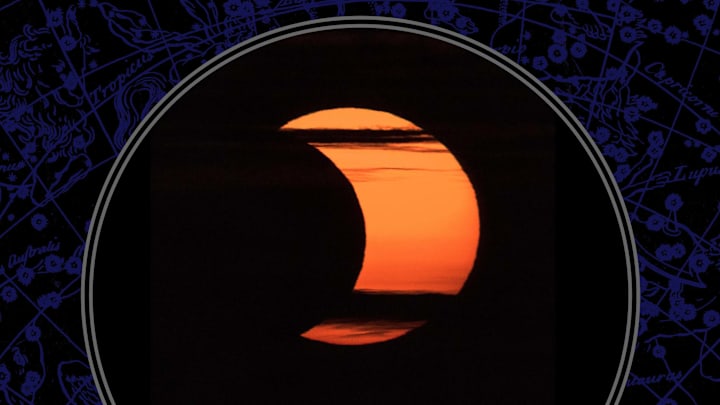Solar eclipses: they’re the fantastic phenomena of the firmament that have captured humanity’s imagination since time immemorial. Ancient Chaco people etched celebratory petroglyphs of the unearthly displays into dry desert stone. The Maya famously predicted their occurrences with advanced astronomical, calendrical, and mathematical systems. And on April 20, 2023, you can partake in this long line of human-sun experiences with one of the rarest types of solar eclipses: a hybrid solar eclipse.
Types of Solar Eclipses
Before we get into talk of hybrid eclipses, here’s a refresher on what they are a hybrid of: total and annular eclipses.
A total eclipse is arguably what most people think of when they imagine a solar eclipse. It is when the distances between the Earth, moon, and sun are aligned perfectly enough for the moon’s disc to completely cover the sun’s face from a very specific perspective on Earth (known as the path of totality). Only during a total eclipse can we see the sun’s corona, its wispy white outer atmosphere, without special scientific equipment.

An annular eclipse occurs when the distances between the Earth, moon, and sun are not quite as perfectly aligned (the moon is too far from the Earth), so the moon’s disc seems smaller than the sun’s face as it passes between the Earth and the sun. During an annular eclipse, we see what is known as a “ring of fire” around the moon. (Annulus in Latin means “ring.”)
A hybrid eclipse is a combination of an annular eclipse and a total eclipse. Typically, it starts out as an annular eclipse, spends most of its time as a total eclipse, and ends as an annular eclipse again. How is this possible? Let’s get into it.
How a Hybrid Eclipse Works
Because Earth is round and three-dimensional, some points on the globe are closer to or farther from the moon at any given moment. About 5 percent of the time, the wobbly orbit of the moon lines up so that during an eclipse, the moon’s shadow passes over points on the globe that are significantly farther away from the Moon than others. People at these points in the path of totality will experience the eclipse as if it were annular and see the “ring of fire.” People at the closer points will experience the eclipse as if it were a total eclipse and see the sun’s corona.
How to See the Hybrid Solar Eclipse
On April 20, 2023, if you’re somewhere near the West Cape Peninsula of Western Australia, eastern Timor-Leste, or the West Papuan island of Indonesia, make plans now to view the event. Check out this simulator to find out where you would have which eclipse experience, and remember to protect your eyes. It is not safe to look directly at the sun during any kind of eclipse without eclipse glasses or a special solar filter on your camera.
If you’re lucky enough to be in its path, don’t miss out on this extraordinary hybrid eclipse—the next one won’t happen again until November 14, 2031.
